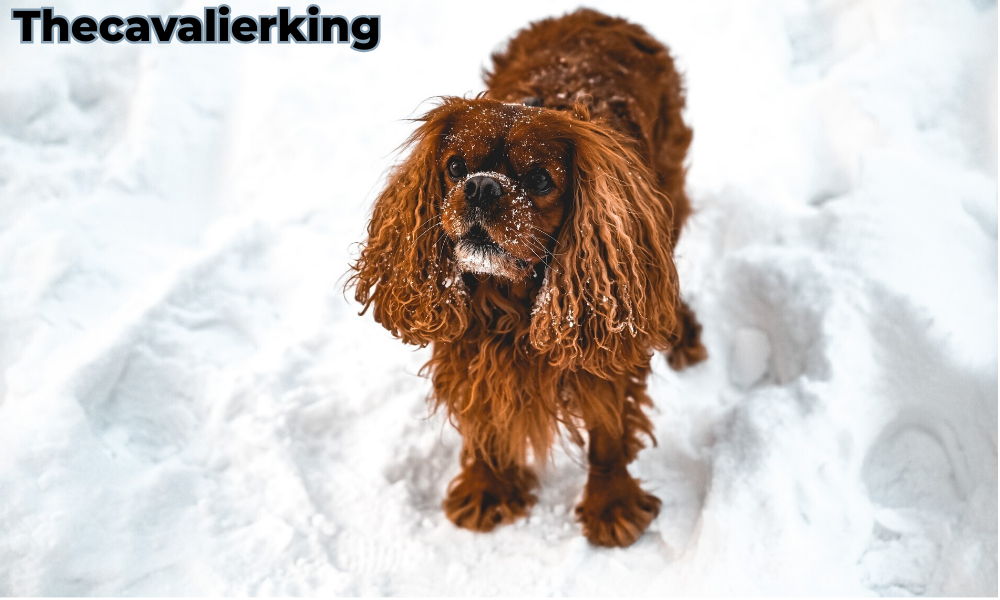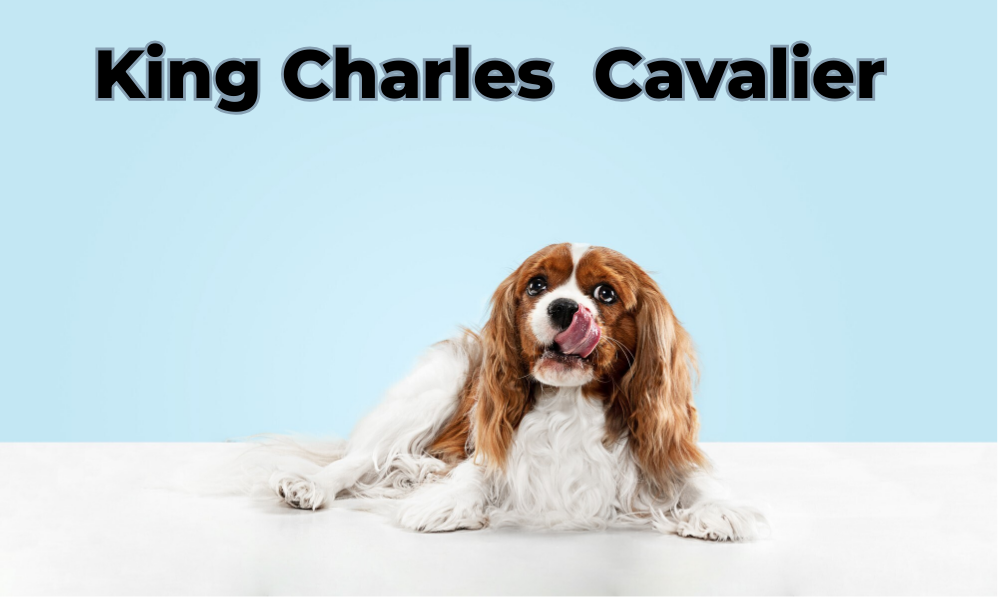Table of Contents
Introduction to Ruby King Charles Cavalier Spaniel Puppies
Brief History of the Breed
The King Charles Cavalier Spaniel is a small dog breed that has a royal background. Named after King Charles II of England, these dogs were originally bred as companion dogs for nobility.
What Makes Ruby King Charles Cavalier Spaniels Unique?
Ruby King Charles Cavalier Spaniels have a beautiful, solid red coat that makes them unique. Their friendly and affectionate nature makes them great pets for families.
Physical Characteristics
Coat Color and Texture
Ruby King Charles Cavalier Spaniels have a rich, red coat that is silky and smooth to the touch. Their fur is medium-length and requires regular brushing.
Size and Weight
These puppies are small in size, typically weighing between 13 to 18 pounds when fully grown. They are about 12 to 13 inches tall at the shoulder.
Distinctive Features
Ruby Cavaliers have large, expressive eyes and long, floppy ears. Their cute, button noses and wagging tails make them incredibly adorable.

Temperament and Personality
Typical Behaviour Traits
Ruby Cavaliers are known for being gentle, affectionate, and friendly. They love to cuddle and stay close to their owners
Socialization with Humans and Other Pets
These puppies get along well with children, adults, and other pets. They enjoy playing and are very sociable.
Activity Level and Playfulness
Ruby Cavaliers are playful and enjoy activities like fetch and running around the yard. However, they also enjoy quiet time and snuggling on the couch.
Health and Wellness
Common Health Issues
Like all breeds, Ruby Cavaliers can be prone to certain health issues such as heart problems and ear infections. Regular vet checkups are important to keep them healthy.
Preventative Care and Regular Checkups
Regular visits to the vet, vaccinations, and preventative treatments can help keep your puppy healthy and happy.
Lifespan and Aging Gracefully
With proper care, Ruby Cavaliers can live up to 12 to 15 years. Providing them with a balanced diet, regular exercise, and lots of love can help them age gracefully.

Nutrition and Diet
Recommended Diet for Puppies
A balanced diet with high-quality puppy food is essential for their growth. Make sure the food has all the necessary nutrients like protein, fats, and vitamins.
Foods to Avoid
Avoid giving your puppy chocolate, grapes, onions, and other harmful foods. These can make them very sick.
Feeding Schedule and Portions
Puppies should be fed three to four times a day with smaller portions. As they grow older, you can reduce the feeding times to twice a day.
Training and Obedience
Basic Training Tips
Start training your puppy with simple commands like “sit,” “stay,” and “come.” Use treats and praise to encourage good behavior.
Housebreaking and Crate Training
Teach your puppy to go to the bathroom outside by taking them out regularly. Crate training can help them feel safe and secure.
Advanced Training Techniques
As your puppy gets older, you can teach them more advanced tricks and commands. Consistency and patience are key.
Grooming Needs
Brushing and Bathing
Brush your puppy’s coat often to keep it shiny and free of knots. Give them a bath once a month or when they need it.
Nail Trimming and Ear Cleaning
Trim their nails every few weeks to keep them from getting too long. Trim their nails every few weeks so they don’t get too long. Clean their ears regularly to prevent infections.
Professional Grooming vs. At-Home Grooming
You can groom your puppy at home, but occasional visits to a professional groomer can help keep their coat in top condition.

Living Arrangements
Ideal Living Environment
Ruby Cavaliers are adaptable and can live in apartments or houses. They need a safe and cozy place to rest and play.
Creating a Puppy-Friendly Space
Set up a designated area with a bed, toys, and water bowl. Make sure it’s a safe space where your puppy can relax.
Travel Considerations
When traveling with your puppy, ensure they are secure in a carrier or crate. Bring their favorite toys and a blanket to help them feel comfortable.
Socialization and Play
Introducing Your Puppy to New Environments
Gradually introduce your puppy to different environments, people, and other animals. This helps them feel well-adjusted and confident.
Safe Playtime Activities
Provide your puppy with safe toys and supervise playtime to prevent any accidents. Activities like fetch and tug-of-war are great for bonding.
Importance of Social Interaction
Regular social interaction helps your puppy develop good behavior and reduces anxiety. Set up playdates with other dogs to keep them social.
Finding a Reputable Breeder
What to Look for in a Breeder
A good breeder will be knowledgeable about the breed and provide health certificates for the puppies. They should also allow you to meet the puppy’s parents.
Questions to Ask the Breeder
Ask the breeder about the puppy’s health history, diet, and personality.x Ensure they have been properly vaccinated and cared for.
Red Flags to Avoid
Avoid breeders who do not provide health records or seem uninterested in the puppy’s well-being. Be cautious of those who sell puppies at a very low price.
Preparing for Your New Puppy
Puppy Proofing Your Home
Remove any dangerous items or small objects that your puppy could swallow. Keep electrical cords out of reach.
Essential Supplies and Gear
Stock up on supplies like a bed, food and water bowls, toys, a collar, and a leash. A crate can also be helpful for training.
First Day Home Tips
When you bring your puppy home, give them time to explore and feel comfortable. Provide lots of love and reassurance.
Raising a Happy and Healthy Puppy
Building a Strong Bond
Spend quality time with your puppy through play and training. This helps build trust and a strong bond.
Addressing Behavioral Issues
If your puppy shows any unwanted behavior, address it calmly and consistently. Positive reinforcement is the best way to correct issues.
Ensuring Long-Term Happiness
Provide your puppy with a balanced diet, regular exercise, and plenty of affection. A happy puppy is a healthy puppy
People Also Ask
What makes Ruby King Charles Cavalier Spaniel puppies special?
-
- Ruby King Charles Cavalier Spaniel puppies are unique because of their beautiful, solid red coat and their friendly, affectionate nature.
How big do Ruby King Charles Cavalier Spaniels get?
-
- They typically weigh between 13 to 18 pounds and stand about 12 to 13 inches tall at the shoulder when fully grown.
What is the temperament of a Ruby King Charles Cavalier Spaniel?
These puppies are gentle, affectionate, and friendly. They are great with children, adults, and other pets, making them excellent family companions
What are some common health issues for this breed?
Common health issues include heart problems and ear infections. Regular vet checkups and preventative care can help manage these concerns
How often should I feed my Ruby King Charles Cavalier Spaniel puppy?
-
- Puppies should be fed three to four times a day with smaller portions. As they grow older, you can reduce the feeding times to twice a day.
How do I groom my Ruby King Charles Cavalier Spaniel?
-
- Regular brushing, monthly bathing, nail trimming every few weeks, and regular ear cleaning are essential for grooming this breed.
What type of living environment is best for a Ruby King Charles Cavalier Spaniel?
-
- They are adaptable and can live in apartments or houses. Providing a safe, comfortable space with a bed, toys, and a water bowl is important.
How can I socialize my Ruby King Charles Cavalier Spaniel puppy?
-
- Gradually introduce your puppy to different environments, people, and other animals. Arrange playdates with other dogs and ensure regular social interaction.
What should I look for in a breeder when buying a Ruby King Charles Cavalier Spaniel puppy?
-
- Look for a knowledgeable breeder who provides health certificates, allows you to meet the puppy’s parents, and answers your questions about the puppy’s health, diet, and temperament.
What supplies do I need for my new Ruby King Charles Cavalier Spaniel puppy?
-
- Essential supplies include a bed, food and water bowls, toys, a collar, a leash, and a crate for training. Make sure to also puppy-proof your home by removing dangerous items
